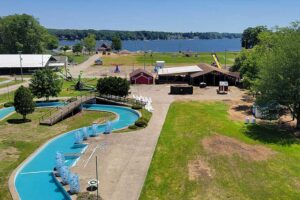Welcome to the world of R programming! If you’re interested in data analysis, then you’ve come to the right place. R is a powerful language that has become the go-to tool for statisticians, researchers, and data scientists around the world. It’s open-source, flexible, and has a vast array of packages that make it easy to analyze and visualize data. In this article, we’ll explore the basics of R programming and why it’s considered one of the best languages for data analysis. Whether you’re a beginner or an experienced programmer looking to expand your skill set, this article will provide you with valuable insights into how R can help you unlock the power of your data. So let’s dive in!
Basics of R
R is a programming language that was specifically designed for statistical computing and data analysis. It is an open-source language, which means that it is free to use and modify. R has become increasingly popular in recent years due to its versatility and ease of use.
One of the key features of R is its ability to handle large datasets with ease. The language has built-in functions for data manipulation, cleaning, and visualization. Additionally, R has a vast library of packages that can be used for various statistical analyses such as regression, clustering, and machine learning.
Another advantage of R is its flexibility in terms of data input/output formats. It can read data from various sources including CSV files, Excel spreadsheets, SQL databases, and even web APIs. This makes it easy to integrate with other tools and platforms.
Overall, understanding the basics of R is essential for anyone interested in data analysis or statistics. With its powerful capabilities and user-friendly interface, it’s no wonder why R has become the go-to language for many researchers and analysts around the world.
Why R is the best language for data analysis
R programming language has been gaining popularity in recent years, especially in the field of data analysis. There are several reasons why R is considered the best language for data analysis. Firstly, R is an open-source programming language that allows users to access a vast range of libraries and packages for data analysis. These libraries and packages provide users with tools to perform complex statistical analyses, data visualization, and machine learning.
Secondly, R has a large community of developers who are constantly improving the language by adding new features and functionalities. This means that users can always find support from the community when they encounter problems or need help with their projects.
Thirdly, R is highly flexible and customizable. Users can easily create their own functions and packages to suit their specific needs. This makes it an ideal language for researchers who need to analyze large datasets or perform complex statistical analyses.
Finally, R is free to use, which makes it accessible to everyone regardless of their financial status. This has made it a popular choice among students, researchers, and professionals alike.
In conclusion, R programming language is the best choice for data analysis due to its flexibility, customizability, accessibility, and strong community support. Whether you are a beginner or an advanced user, there is no doubt that R will continue to be one of the most important languages in the field of data analysis for years to come.
R programming for beginners
If you’re new to R programming, don’t worry – it’s not as intimidating as it may seem. The first step is to familiarize yourself with the basics of R, such as data types, variables, and functions. Once you have a good grasp on these concepts, you can start exploring more advanced topics like data visualization and statistical analysis.
One great resource for beginners is the “R for Data Science” book by Hadley Wickham and Garrett Grolemund. This book provides a comprehensive introduction to R programming and covers everything from basic data manipulation to advanced modeling techniques.
Another helpful tool for beginners is online tutorials and courses. Websites like DataCamp and Coursera offer free or low-cost courses that can help you get started with R programming. These courses typically include interactive exercises and quizzes to help reinforce your learning.
Remember, learning any new skill takes time and practice. Don’t be afraid to make mistakes or ask for help along the way. With dedication and persistence, you’ll soon be on your way to becoming an expert in R programming.
Intermediate R programming
Now that you have a good grasp of the basics of R programming, it’s time to move on to intermediate level concepts. At this stage, you’ll start working with more complex data structures and functions. You’ll also learn how to write efficient code and optimize your programs for better performance.
One important concept in intermediate R programming is working with loops and conditional statements. These allow you to iterate through data sets and perform operations based on certain conditions. You’ll also learn about functions, which are reusable blocks of code that can be called multiple times within a program.
Another key topic at this level is data manipulation and transformation. This involves cleaning and organizing large datasets so they can be analyzed effectively. You’ll learn how to use packages like dplyr and tidyr to filter, sort, group, and summarize data.
Overall, intermediate R programming builds on the foundation laid in the beginner stage and prepares you for more advanced topics like machine learning and statistical analysis. With practice and dedication, you’ll soon be able to write complex programs that solve real-world problems using R.
Advanced R programming
As you progress in your R programming journey, you will eventually reach the advanced level. At this stage, you will be able to tackle complex data analysis problems and develop custom functions to solve them. Advanced R programming involves mastering the use of packages, creating efficient code, and optimizing performance.
One important aspect of advanced R programming is understanding how to work with large datasets. This requires knowledge of memory management techniques such as lazy evaluation and chunking. Additionally, it is essential to know how to use parallel processing techniques for faster computation.
Another critical skill at the advanced level is developing custom packages. This involves creating reusable code that can be shared with others in the R community. You will need to understand package structure, documentation standards, and version control systems.
Overall, advanced R programming requires a deep understanding of the language and its capabilities. With dedication and practice, you can become a proficient R programmer capable of solving complex data analysis problems efficiently.
Conclusion
In conclusion, R programming is an incredibly powerful tool for data analysis that has gained immense popularity in recent years. Its flexibility and versatility make it the go-to language for statisticians, data scientists, and researchers worldwide. Whether you are a beginner or an advanced user, R offers a wide range of functionalities that can help you analyze and visualize complex datasets with ease. With its vast community support and continuous development, R is undoubtedly here to stay as the leading language for data analysis. So if you’re looking to take your data analysis skills to the next level, learning R programming is definitely worth your time and effort!







